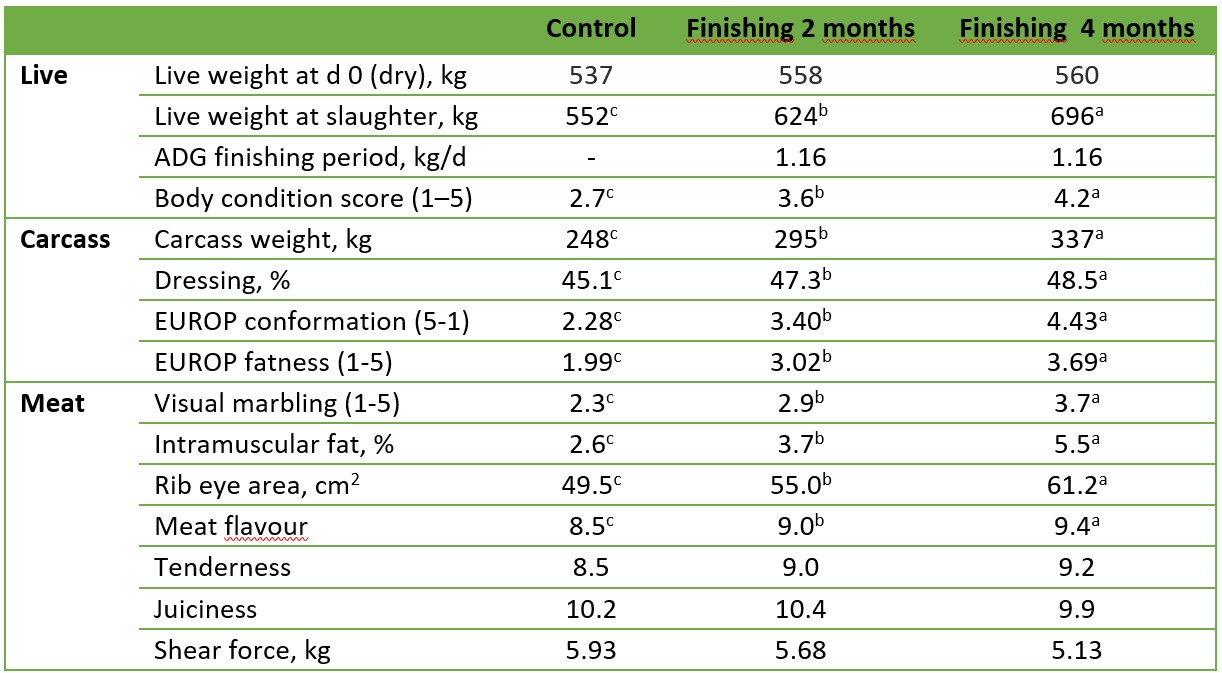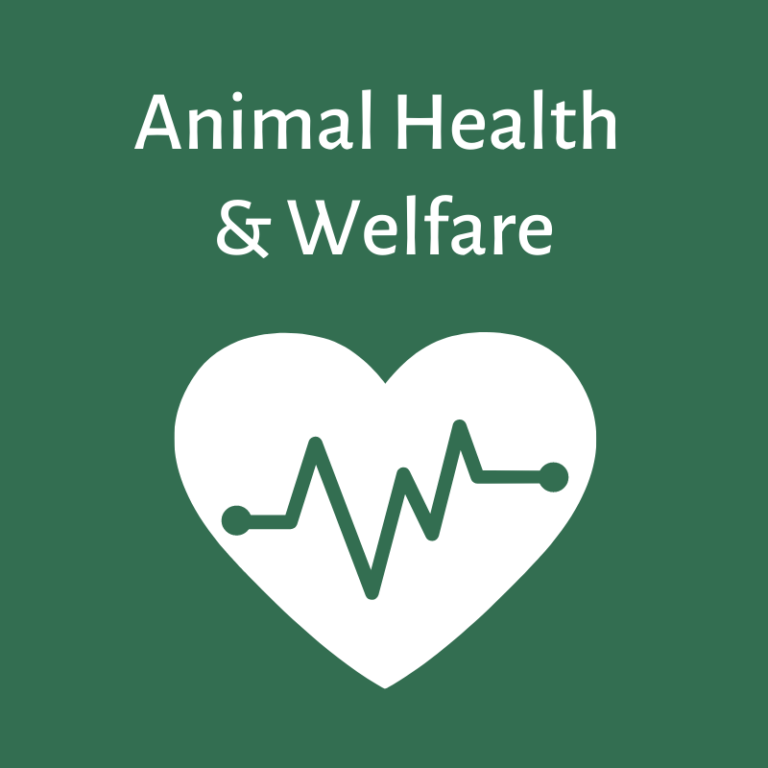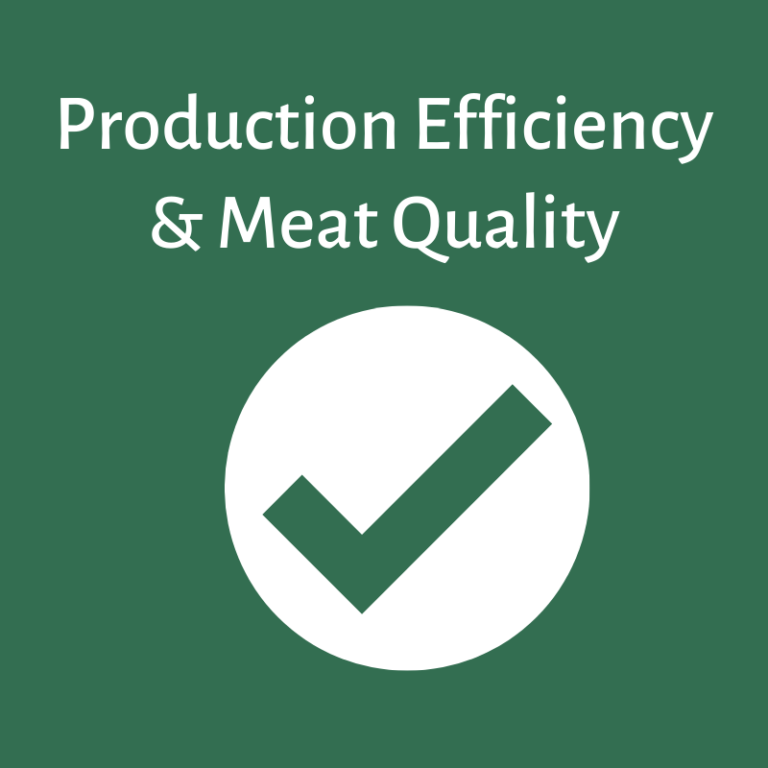The meat from cull cows is used for butchering, but it can be sold as low-priced meat (“burger meat”) or as an exceptionally high valuable product (Moreira et al., 2021; Crecente 2017a). The desired characteristics can differ in different regions; in Galicia (Spain) for example, selected carcasses (Figure 1) are heavy (> 370 kg), with an R or better SEUROP conformation and four or five fatness level of a yellow back fat (Crecente 2017a,b). The meat needs to be well marbled (Figure 1), with a red intense colour and a deep flavour, as proper of a mature animal. Some of these characteristics can be predicted by body condition and live weight, and a finishing period will be required when they are at sub-optimum levels (Carballo & Moreno, 2006; Moreno et al., 2012; Moreira et al., 2021).
 Figure 1. Carcass and loin of a fattened Holstein-Friesian cull cow (photo: Santiago Crecente).
Figure 1. Carcass and loin of a fattened Holstein-Friesian cull cow (photo: Santiago Crecente).
Compared to cull beef cows, dairy cows receive a high-quality diet throughout their entire life, which may contribute to some quality advantages; cull dairy cows are generally younger, with higher marbling scores, but they have a reduced yield (Moreira et al., 2021) and a lower SEUROP carcass quality (Carballo & Moreno, 2006). In the slaughterhouse, it can be seen that there is a great margin for improvement, especially in dairy cull cows, where a finishing period is less common (Vestegaard et al., 2007; Carballo & Moreno, 2006; Moreno et al., 2012).
One study carried out in Denmark tested two finishing feeding periods as a way to improve carcass, meat and eating quality of culled dairy cows. During the seven days drying-off period, Danish Friesian cows were kept in tie stalls and had free access to barley straw and water (Vestergaard et al., 2007). Then, 129 cows were allocated to one of three treatment groups, homogenized according parity, live weight, body condition, and culling reason. A control group was slaughtered immediately; a second group was finishing-fed for two months (F2); and a third group was finishing-fed during four months (F4). In the finishing period the cows had free access to a total mixed ration containing 10.6 MJ of metabolizable energy/kg of dry matter and 13% of crude protein/kg of dry matter.
Table 1. Live, carcass and meat quality characteristics in culled dry dairy cows without (Control) or with a two or four months finishing period (Vesteergard et al., 2007).
 Means with a different superscript within a row are different (P < 0.05).
Means with a different superscript within a row are different (P < 0.05).The results of the study are presented in the Table 1. F2 and F4 groups gained on average 1.16 kg/d in the finishing period. Compared with the control, carcass from F2 and F4 treatments had 56 and 97 kg higher weight, 10% and 21% larger Longissimus muscle area, and 14 and 70% more backfat, respectively. EUROP conformation and fatness scores were improved.
The intramuscular fat percentage was 42% and 112% higher in F2 and F4 groups, respectively, compared with the control cows (Table 1). Finally, finishing feeding for culled dry dairy cows improved meat flavour and tended to reduce shear force value and improved tenderness and juiciness. Another study had also shown that meat flavour can be improved by finishing animals with a supplemental energy before slaughter, by reducing pasture derived aromas (Stelzleni & Johnson, 2010). The shear force, indicator of meat toughness, is generally high in the beef from dairy cull cows (Moreira et al., 2021), but it can be improved with a finishing strategy before slaughter (Therkildsen et al., 2011) or applying to the meat a long ageing period (Franco et al., 2009).
While the product quality can be improved, the economic viability of the finishing program must be considered due to the low feed efficiency of these cows and the over-fat deposition, both of which deteriorate over time (Serrano, 2016). Different finishing diets do not seem to affect much the results observed in the final product, but they do affect the time required to achieve them, which could exceed 200 days in animals slaughtered at around 800 kg of live weight (Moreno et al., 2012).
In addition, the quality sought must represent a step towards a higher commercial category in order to achieve a higher price for live animals or carcasses (Crecente 2017a), but selecting the animals with a proper “weight gain capacity” to initiate the finishing step is challenging (Serrano 2016). When animals are with low or very low body condition, they could be finished just by grazing spring pastures (for the compensatory growth), or use a grazing intermediate period to reduce costs, but finally a concentrate based diet will help to obtain better results (Crecente 2017b).
Authors:Virginia C. Resconi and Jakeline Vieira Romero (Universidad de Zaragoza, Spain) and Santiago Crecente (Centro de Investigaciones Agrarias de Mabegondo, Abegondo, A Coruña, Spain)Impact on:
 | The higher quality may allow for a higher product price, but the costs of feeds must be considered. |
 | |
 | A superior carcass and meat quality is expected in meat from cull cows receiving finishing diets. |
 | A long finishing period could increase animal emissions. |
Source of information:
- Crecente, S. 2017a. Producción de carne de vacuno mayor en Galicia (I). Campo Galego.
- Crecente, S. 2017b. Producción de carne de vacuno mayor (II). Campo Galego.
- Franco, D. et al. 2009. Meat Science. 83:484–91.
- Moreira et al. 2021. Journal of Animal Science. 99: 1–18.
- Moreno et al. 2012. Animal 6 (10): 1634–1641.
- Serrano, E. 2016. ITEA‑Información Técnica Económica Agraria 112 (2): 162-184.
- Stelzleni & Johnson. 2010. Livestock Science 131: 31–38.
- Therkildsen et al. 2011. Meat Science 87:73–80.
- Vestergaard, M. et al. 2007. Meat Science. 76: 635-643.